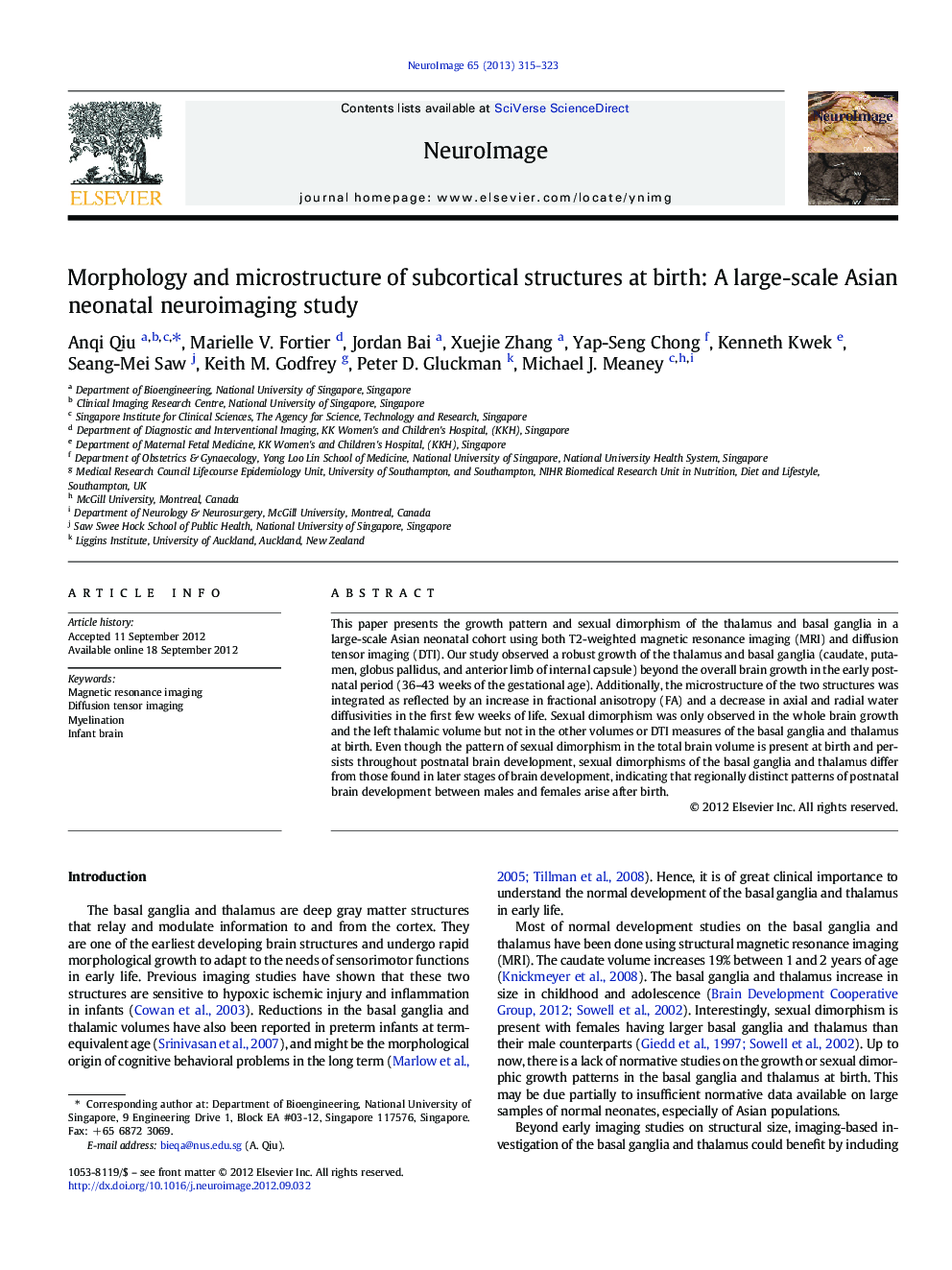| Article ID | Journal | Published Year | Pages | File Type |
|---|---|---|---|---|
| 6030061 | NeuroImage | 2013 | 9 Pages |
This paper presents the growth pattern and sexual dimorphism of the thalamus and basal ganglia in a large-scale Asian neonatal cohort using both T2-weighted magnetic resonance imaging (MRI) and diffusion tensor imaging (DTI). Our study observed a robust growth of the thalamus and basal ganglia (caudate, putamen, globus pallidus, and anterior limb of internal capsule) beyond the overall brain growth in the early postnatal period (36-43Â weeks of the gestational age). Additionally, the microstructure of the two structures was integrated as reflected by an increase in fractional anisotropy (FA) and a decrease in axial and radial water diffusivities in the first few weeks of life. Sexual dimorphism was only observed in the whole brain growth and the left thalamic volume but not in the other volumes or DTI measures of the basal ganglia and thalamus at birth. Even though the pattern of sexual dimorphism in the total brain volume is present at birth and persists throughout postnatal brain development, sexual dimorphisms of the basal ganglia and thalamus differ from those found in later stages of brain development, indicating that regionally distinct patterns of postnatal brain development between males and females arise after birth.
⺠Morphology and microstructure of subcortical structures among 161 normal neonates. ⺠A robust growth of the thalamus and basal ganglia in the early postnatal period. ⺠Sexual dimorphisms in early life different from those found in later life.
